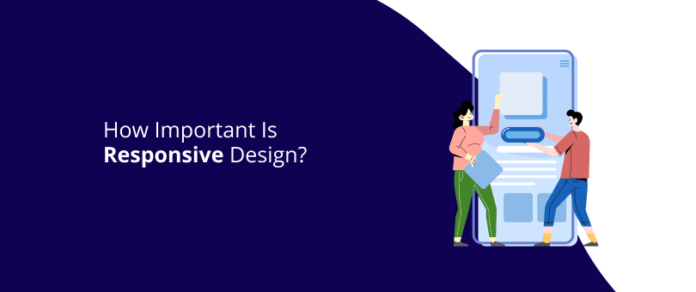Introduction:
In the dynamic landscape of the internet, the prevalence of web applications has become ubiquitous, serving diverse purposes for businesses, organizations, and individuals. As users increasingly access web applications on a myriad of devices, the importance of responsive design in modern web app development has become paramount. In this article, we delve into the crucial role of responsive design and explore how it contributes to the success of web applications in the contemporary digital era.
Understanding Responsive Design:
Responsive design is a design approach that prioritizes the creation of web applications that can adapt and optimize their layout and functionality across various devices and screen sizes. Unlike traditional fixed designs that may work well on a desktop but provide a subpar experience on mobile devices, responsive design ensures a seamless and user-friendly experience regardless of the device being used.
The Proliferation of Mobile Devices:
One of the driving forces behind the emphasis on responsive design is the widespread use of mobile devices. Smartphones and tablets have become integral parts of our daily lives, and users expect web applications to be accessible and functional on these devices. Responsive design addresses this need by dynamically adjusting the layout, images, and content to provide an optimal viewing and interaction experience on screens of all sizes.
Enhancing User Experience Across Devices:
The primary goal of any web application is to deliver a positive user experience. Responsive design plays a pivotal role in achieving this by ensuring that users have a consistent and enjoyable experience regardless of the device they are using. A web application that is not optimized for different devices can lead to frustration, decreased user engagement, and a higher bounce rate. Responsive design mitigates these issues, contributing to increased user satisfaction and retention.
Search Engine Optimization (SEO) Benefits:
Search engines, such as Google, have recognized the importance of mobile-friendly experiences. Google’s algorithms prioritize mobile-friendly websites and web applications in search results. Therefore, responsive design not only improves the user experience but also positively impacts a web application’s visibility on search engines. Higher search engine rankings can result in increased organic traffic and better overall visibility for the web application.
Adaptability to Future Devices:
The digital landscape is constantly evolving, with new devices and screen sizes emerging regularly. Responsive design offers a future-proof solution by ensuring that web applications can adapt to the changing technological landscape. This adaptability is crucial for businesses and organizations that want to stay ahead of the curve and provide a consistent user experience as technology continues to advance.
Challenges of Non-Responsive Design:
Web applications that are not optimized for different devices face several challenges that can hinder their success. For instance, a non-responsive design may lead to distorted layouts, broken images, and a cumbersome user interface on smaller screens. This not only creates a frustrating experience for users but can also result in missed business opportunities and a negative impact on the brand’s reputation.
Web Application Development Services: Integrating Responsive Design:
To address the complexities of responsive design and ensure its seamless integration into web application development, businesses often turn to professional web application development services. These services combine the expertise of developers and designers to create web applications that not only meet the functional requirements but also prioritize a responsive and user-friendly design. Leveraging web application development services ensures that responsive design principles are woven into the fabric of the development process from the outset.
Fluid Grids and Flexible Images:
Responsive design relies on fluid grids and flexible images to create layouts that can adapt to different screen sizes. Fluid grids use relative units, such as percentages, rather than fixed units like pixels, allowing the layout to scale proportionally. Flexible images, similarly, adjust in size based on the screen dimensions. Web application development services employ these techniques to create designs that seamlessly flow and adjust, providing a consistent and visually pleasing experience across devices.
Media Queries for Device Adaptation:
Media queries are a fundamental aspect of responsive design, allowing developers to apply specific styles based on the characteristics of the device, such as screen width, height, and orientation. By using media queries, web application development services can tailor the user interface to suit the capabilities and constraints of different devices. This ensures that users receive an optimized experience, whether they are using a desktop, laptop, tablet, or smartphone.
Performance Optimization:
Responsive design not only enhances the visual appeal and usability of a web application but also contributes to performance optimization. By delivering content that is tailored to the user’s device, responsive design reduces unnecessary data transfer and accelerates page loading times. This is particularly crucial in a world where users expect instant access to information, and slow-loading websites can lead to frustration and abandonment.
Conclusion:
In conclusion, the importance of responsive design in modern web app development cannot be overstated. As users embrace a multitude of devices to access information and services, the need for web applications to provide a seamless and consistent experience across these platforms becomes paramount. Responsive design not only addresses this need but also brings additional benefits, including improved SEO, adaptability tao future devices, and enhanced performance. For businesses and organizations aiming to succeed in the digital realm, integrating responsive design through professional web application development services is not just a choice but a strategic imperative to meet the evolving demands of the modern user.














